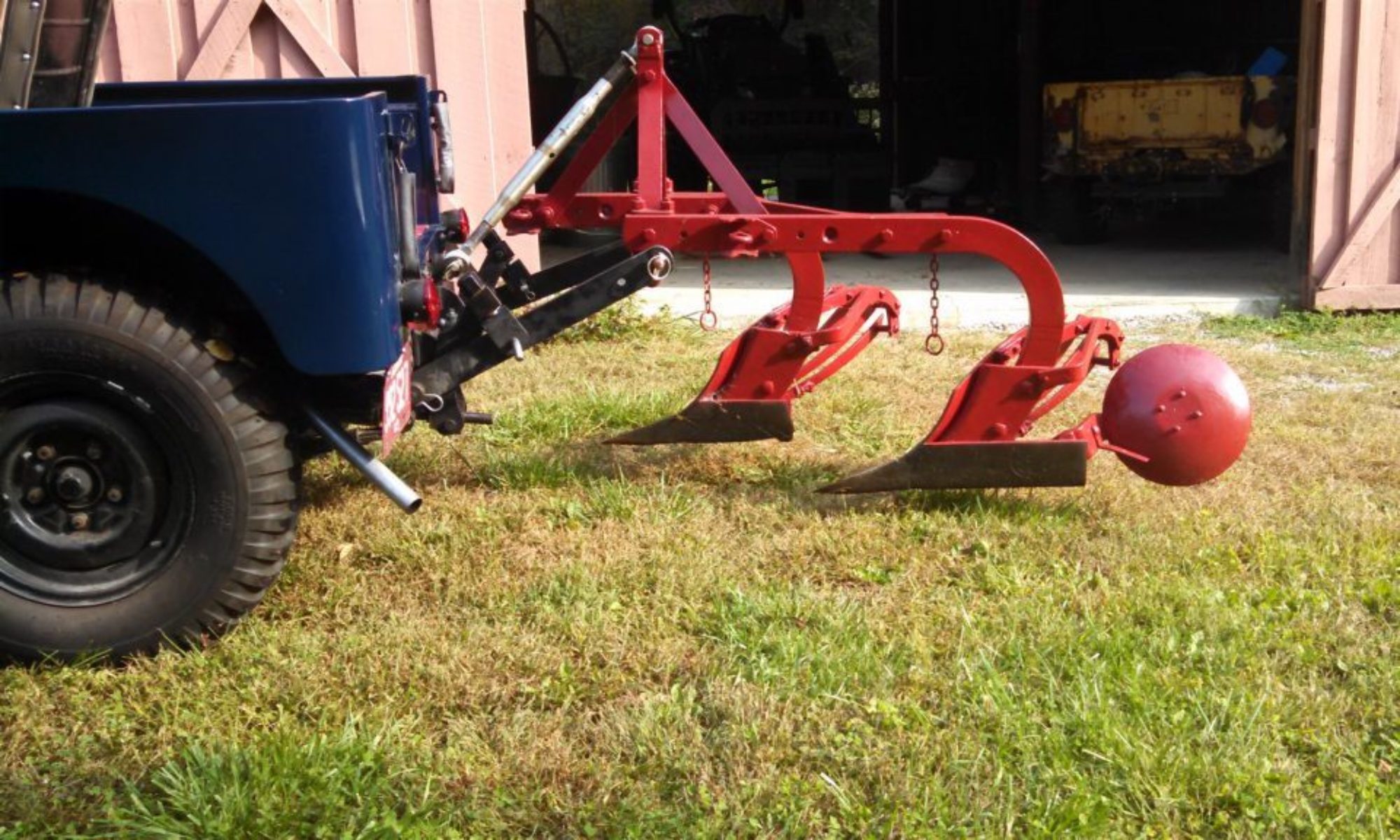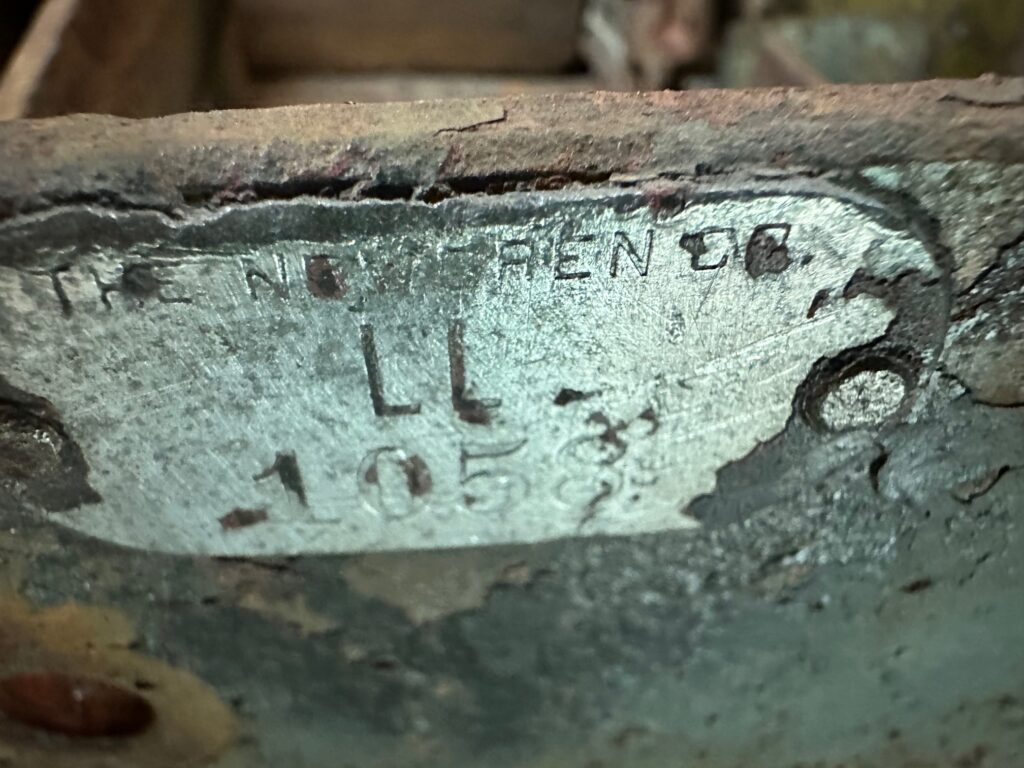
Kyle Buchter of Off-Road Consulting (www.offroad-consulting.com) sent us a note saying his Newgren Lift had a prefix of LL and serial number 1058. We have never seen another tag with an LL prefix. The prefix listed on the Newgren installation instructions is “BL.” It is assumed that the “B” is for Benedict Manufacturing. We believed the “L” was for lift.
Our first response was that we thought the tag had been damaged and the “BL” had become a “LL.” Kyle sent more pictures. He examined the tag under different lighting, and it is stamped “LL.”
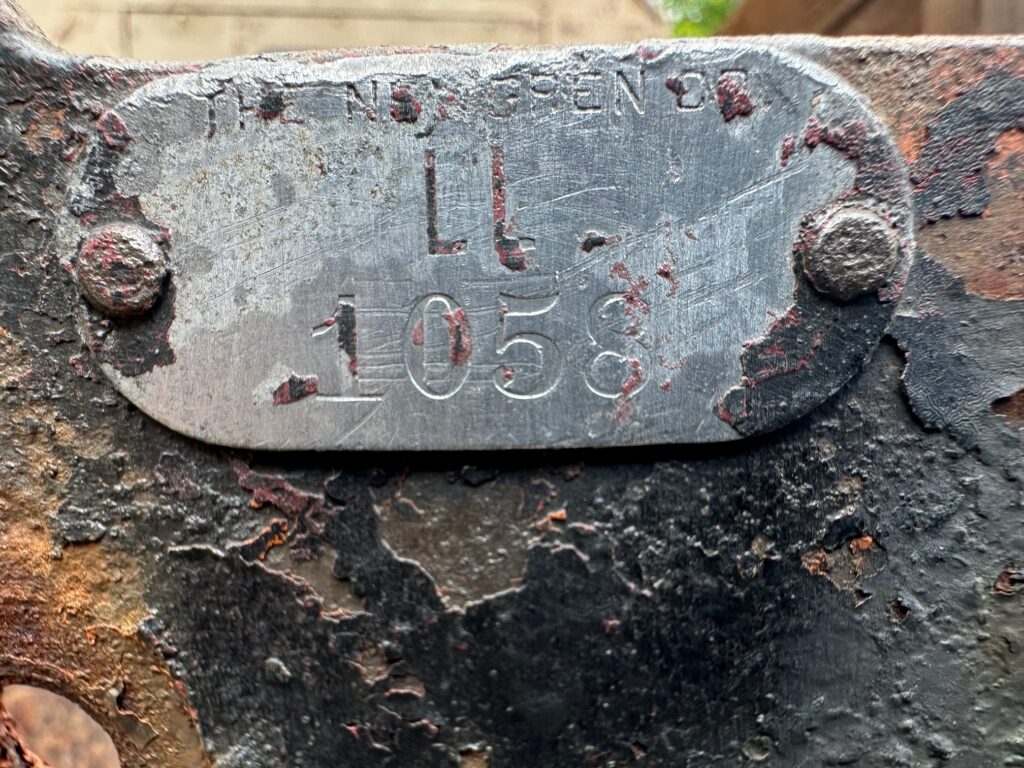
The pictures Kyle sent indicate an early Love-produced lift. This is evident by the welded hitch plate and the lack of a reservoir or a control valve in the lift frame. Could the “LL” simply stand for “Love Lift”? We believe so.
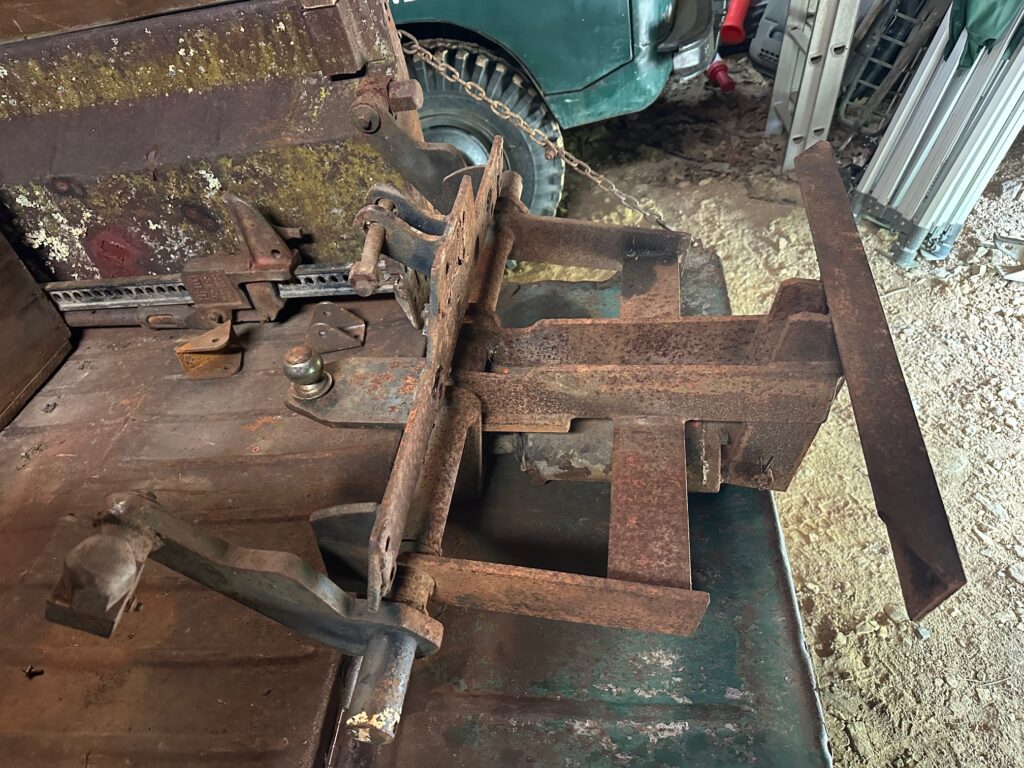
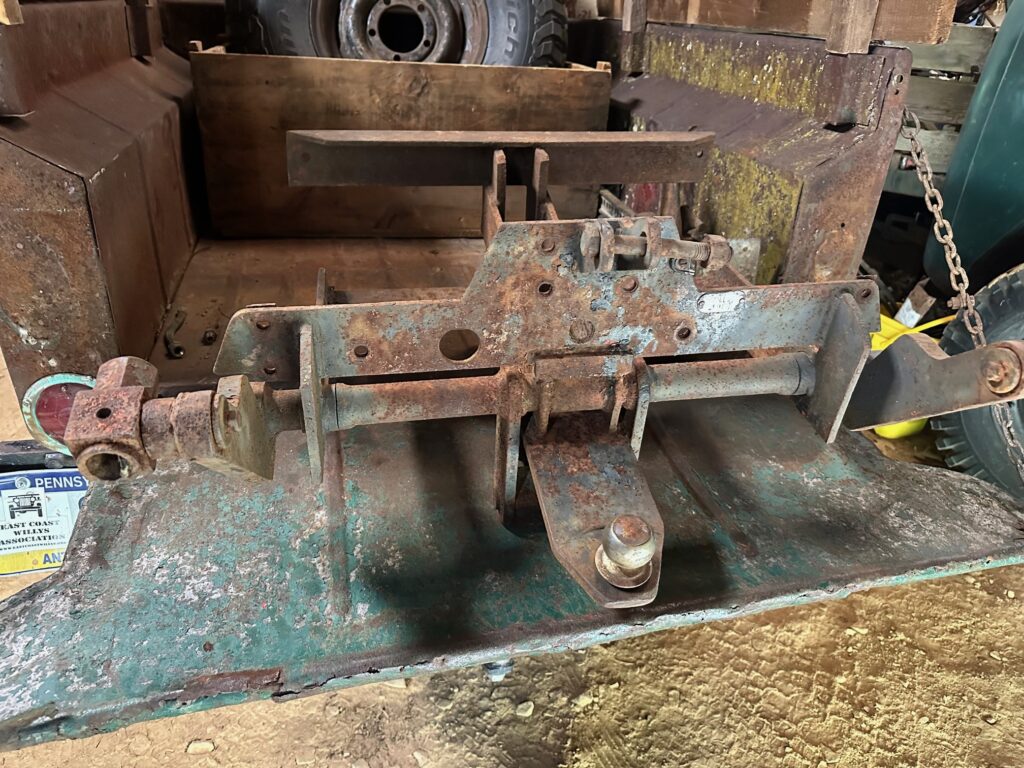
We sent Kyle’s note to Clint Dixon and others. Here is Clint’s response –
You picked up on something that I never gave any thought to. I think you are absolutely correct. It seems Newgren was always on-board with using acronyms or abbreviations as model identifiers. All of the early Newgren tags that I have photographed from low mast
plows supplied to them from the Wiard Plow Co. begin with “WP” (Wiard Plow).

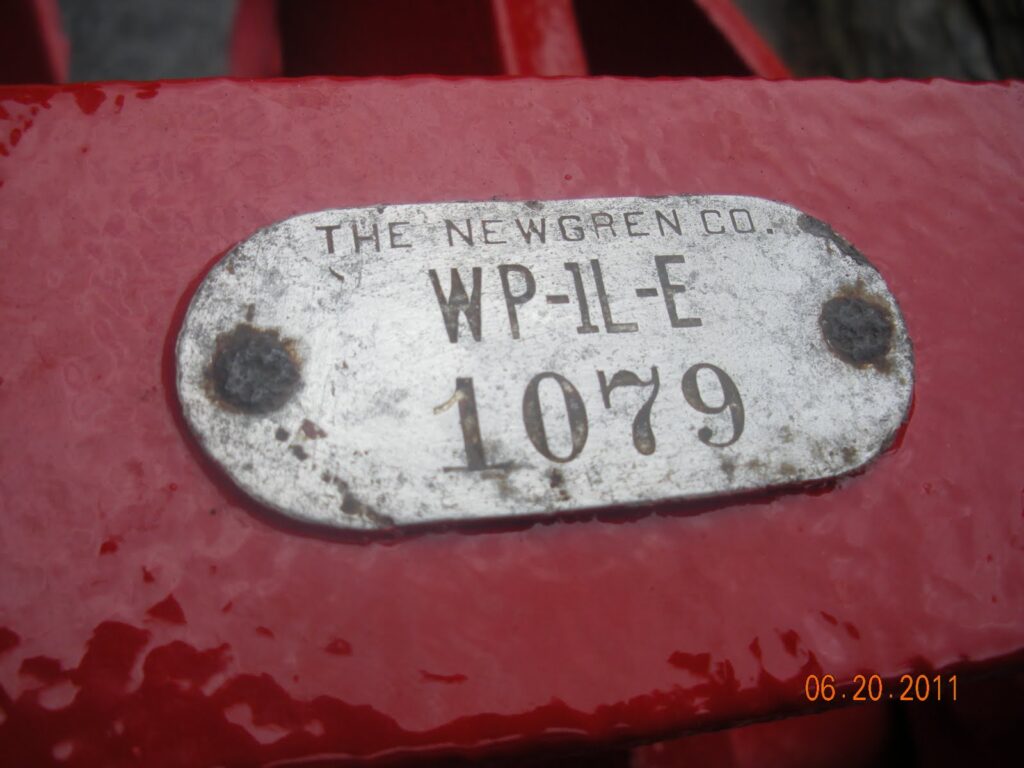
The Newgren Lift tags (non-Love) I have photographed all begin with “BL” (Benedict Lift)
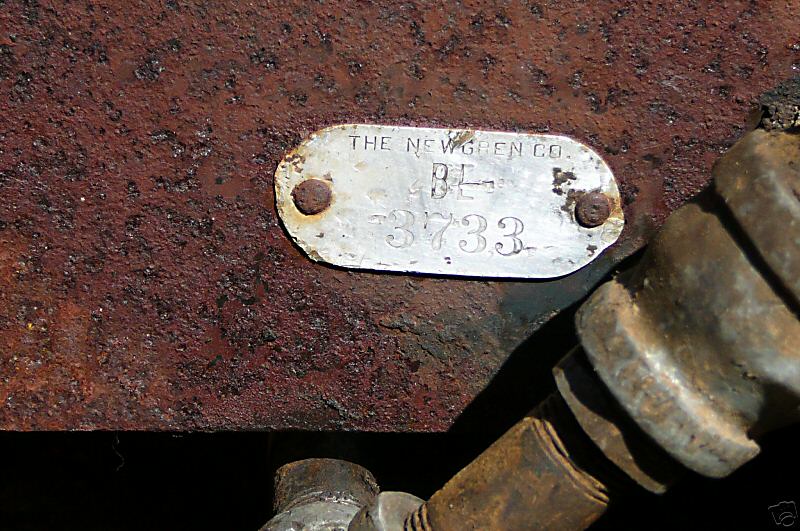
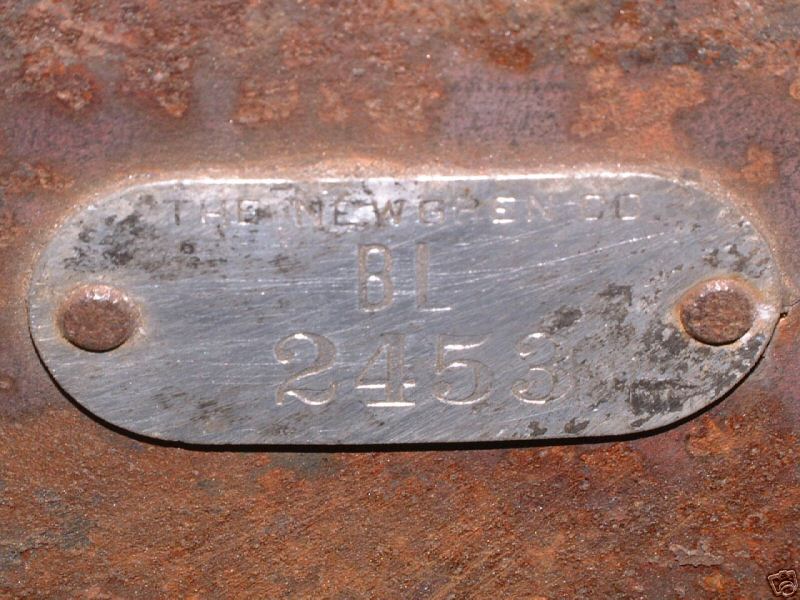
Even the later tags I have seen on the tall mast Monroe compatible implements used the same type of model identification.
NDGP 12 (Newgren Double General Purpose 12-inch):
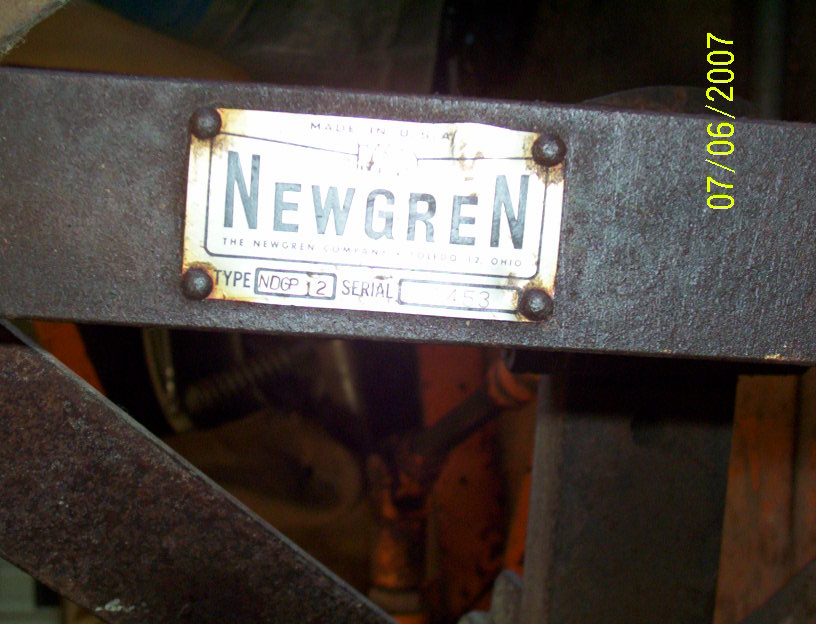
When you look through the Newgren literature, one sees more of the same on other implements supplied to Newgren from their vendors:
SHG (Stockland Hydro-Grader)
DLS (Dellinger Lift Saw)
RPD (Roper Post [hole] Digger)
When the Newgren tags were removed and replaced by Monroe decals in photos taken for the Dodge Special Equipment Catalog, the same acronyms or abbreviations carried over in that literature, too.
History of the “LL” or Love Lift
We have written extensively about Jabez Love and the lift we believe was introduced in September 1946. Love had been manufacturing his line of tractors in 1939 when he saw a demonstration of the Ford 9N hydraulic lift. Over the next two years, he opened a Ford Tractor dealership beside his tractor plant and began manufacturing 3-point implements.
Although we have no evidence, we believe that Love worked on his version of a tractor 3-point hitch from 1941 to 1944. How Love came to join Willys in 1944 as a “consultant” will most likely remain a mystery. He may have had the basic plan for a lift that would work with the yet-to-be-released civilian Jeep. There are and will continue to be many unanswered questions: Did Love contact Willys with an idea, or was Willys looking for someone to design a lift? Did Sorensen arrive before or after Love? And the biggest question is, why did Sorensen bring in another engineer to work on the lift?
Love delivered a working 3-point lift with an under-the-bed design. The pump was belt-driven, and the reservoir and control valve were under the hood. A rod operated the control valve on the dashboard.
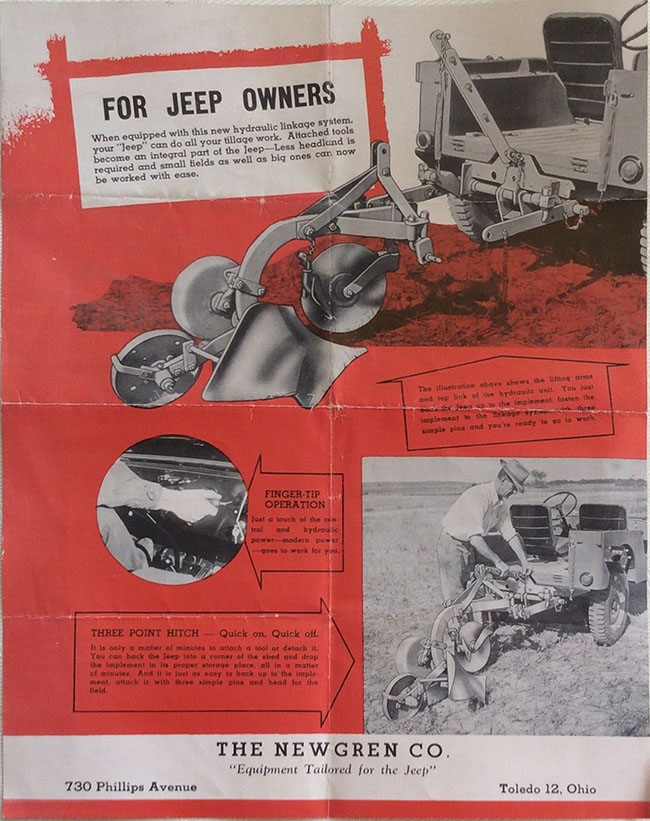
Why Newgren?
Charles Sorensen arrived at Willys in 1944 and quickly assumed responsibility for the civilian Jeep project. No documentation tells us if Love arrived before or after Sorensen. But we know that two people were assigned to work on the project. George Newlin had managed Sorensen’s farms for many years. Robert Green was a young engineer who had worked on Sorensen’s most famous project at Ford. Sorensen appears to have asked these two men to form a company to sell the hydraulic lift and implements for the new Jeep.
Why form a new company? Why not use Love and his companies to manufacture and distribute the lifts? Again, there is no hard evidence available that might answer these questions. However, after studying the players involved, we can speculate that Love and Sorensen may not have hit it off.
Sorensen was a Ford Motor man despite being dismissed by Henry Ford. He returned to Detroit to testify in the Harry Ferguson case on Ford’s behalf. Sorensen was a straight-shooter, no-nonsense guy who surrounded himself with people he could trust.
Love was more of a loose cannon. He made deals, then ignored them when circumstances changed. He wasn’t above copying someone else’s design and making it his own. Love’s work on a copy of the Ford/Ferguson 3-point hitch might have been a red flag for Sorensen.
Willys never sold a W-O-branded lift, as they had done with the PTO. Newgren Equipment, Monroe Auto Equipment Company, and Stratton Equipment Company provided the lifts. This may have been Sorensen’s way of avoiding legal issues involving the Ford/Ferguson system patents.
Love might not have wanted to enter the lift business separately from his tractor and implement enterprises. More likely, Sorensen, by hand-picking Newgren’s owners, would have at least indirect control of the operation.
The “BL” Lift
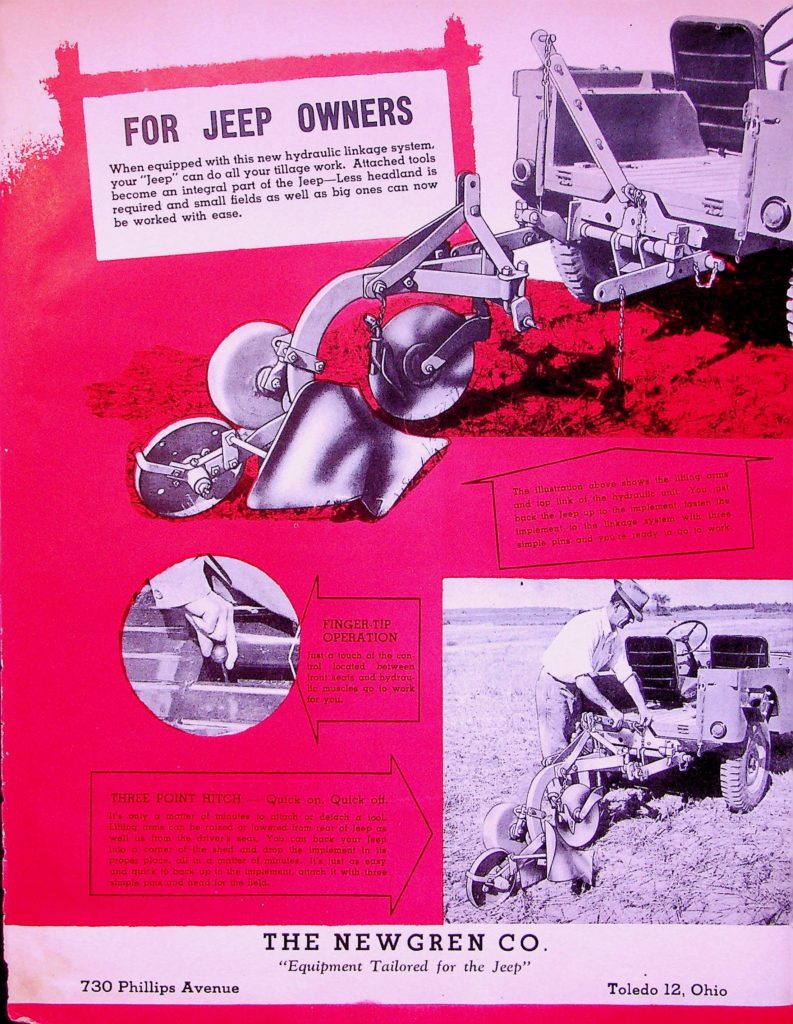
Did Sorensen see something in Love’s design he didn’t like? Or, as we suspect, did Sorensen want his own man in charge of developing the lift? We know that Green made engineering changes to Love’s design, which he later incorporated into his second lift design.
Green arrived at Willys in 1945, but his engineering changes weren’t applied to Love’s lift until 1947, when the “BL” version appeared. Kyle’s discovery of the “LL 1058” lift is the first evidence of how Newgren handled the transition.
The “LL” factor
The discovery of the “LL” type lift also clarifies how to explain the four “Jeep Approved” lifts offered for the Jeep. Before, we had listed Love, Newgren, Monroe, and Stratton. Now we know there were the Newgren “LL,” Newgren “BL,” Monroe, and Stratton. Only three companies sold four styles.
We will review our writings over the next few months to ensure this new evidence is added to the Newgren history. We want to thank Kyle for his contribution to the Farm Jeep story.
